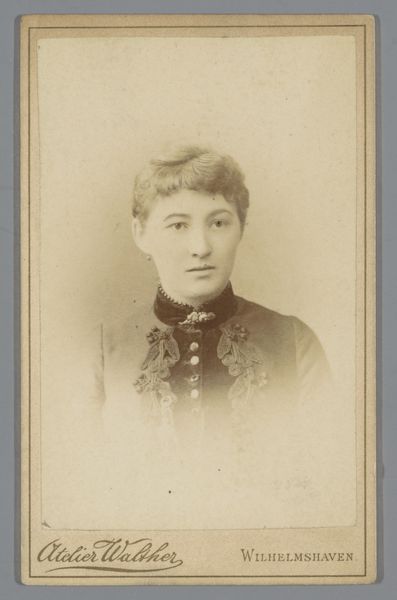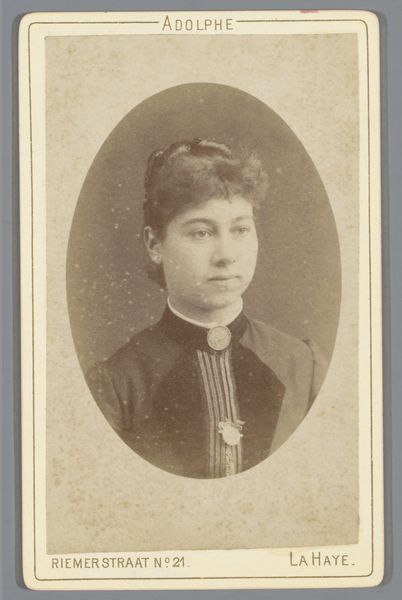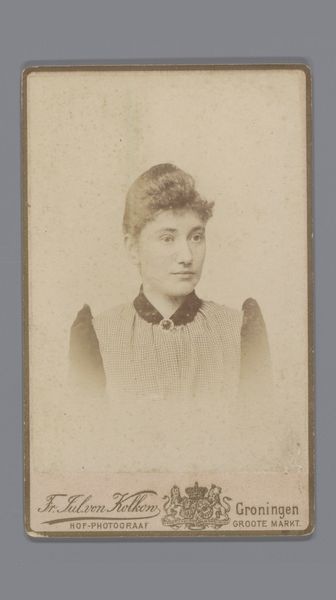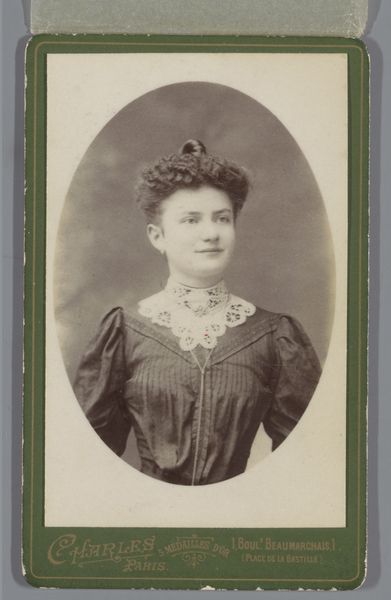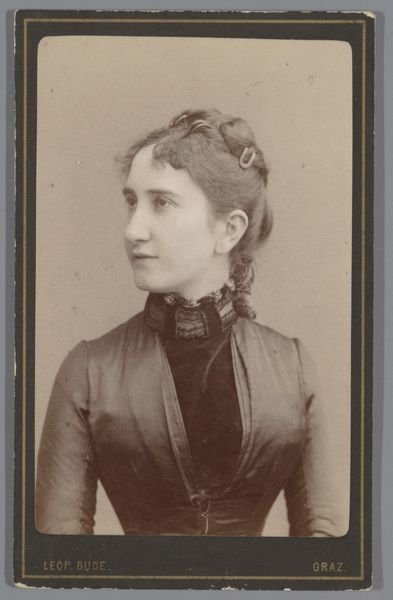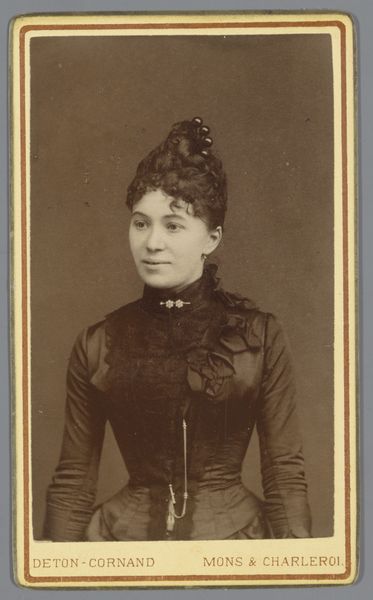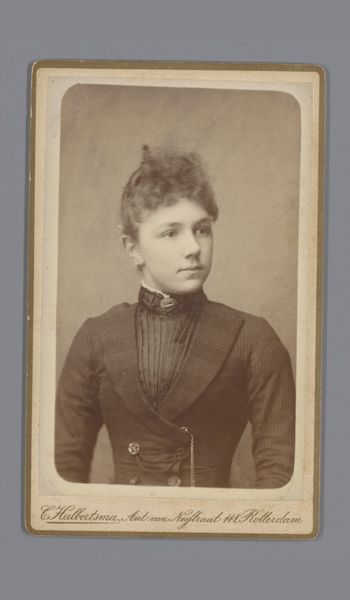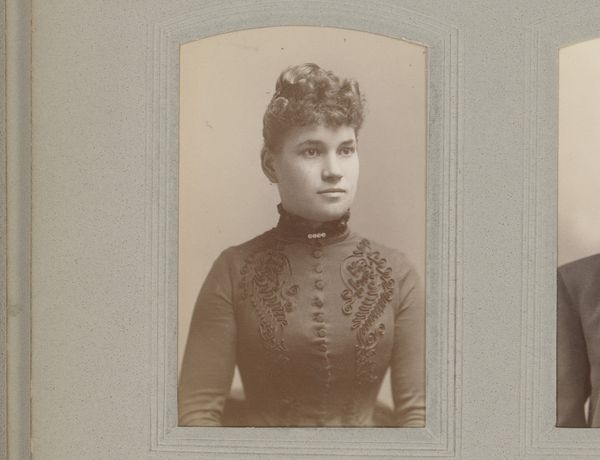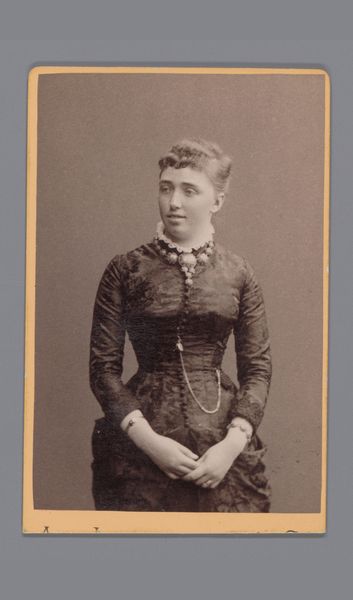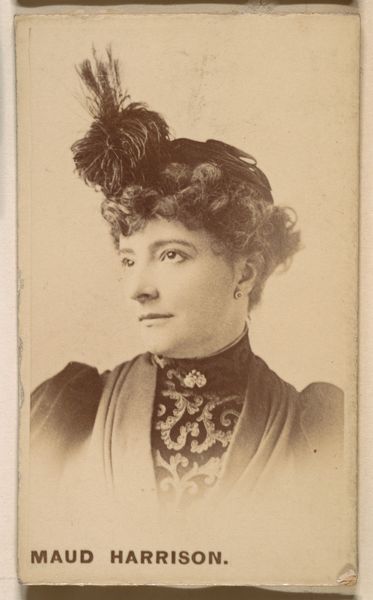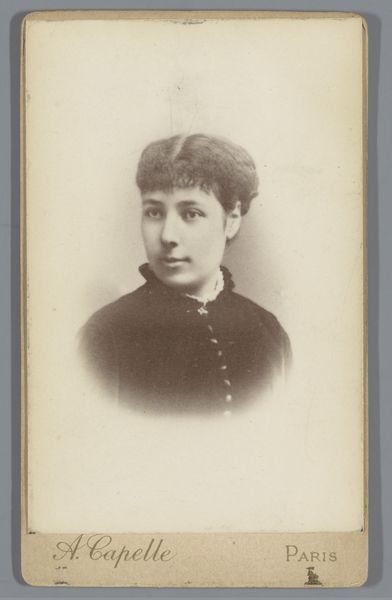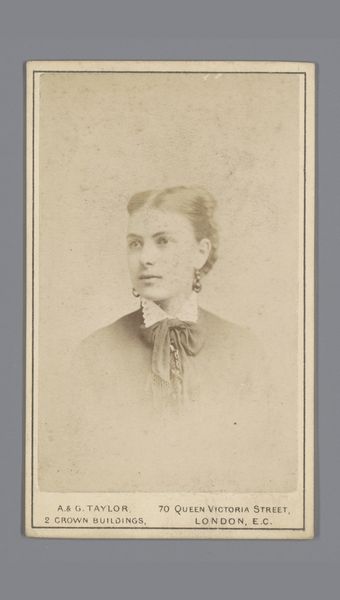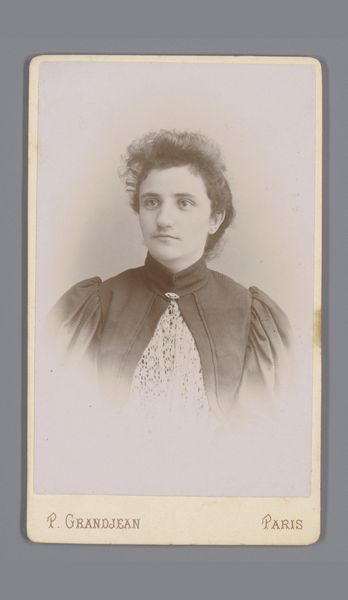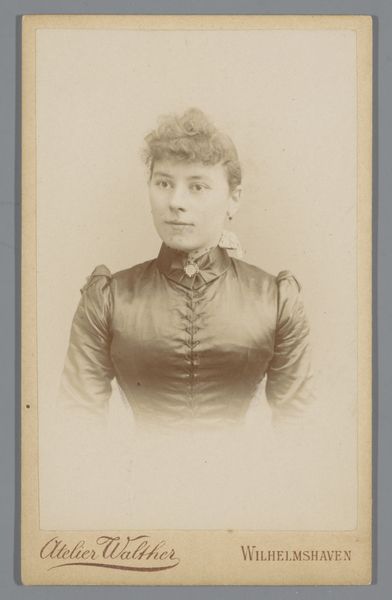
photography, albumen-print
#
portrait
#
still-life-photography
#
16_19th-century
#
flower
#
photography
#
portrait reference
#
framed image
#
19th century
#
portrait drawing
#
portrait art
#
albumen-print
Dimensions: height 133 mm, width 93 mm
Copyright: Rijks Museum: Open Domain
Curator: I'm struck by the quiet melancholy of this photograph, the subject’s soft gaze directed just beyond the frame. There's an undeniable Victorian aura about it. Editor: Indeed. This is a wonderful example of late 19th, early 20th-century portraiture, titled "Portret van een jonge vrouw met jurk met bloemen," or "Portrait of a Young Woman with a Dress of Flowers." It's credited to Fr. C. Lachenwitz and executed sometime between 1875 and 1910 using the albumen print technique. Curator: The albumen process lends a specific visual quality here. Note the limited tonal range, the subtle shifts from warm grays to sepia. It focuses our attention on form, specifically the figure and her posture. She’s centrally placed, nearly symmetrical, reinforcing her composed appearance. Editor: And a constructed appearance. The flowers adorning her dress act almost as a coded announcement, shaping her presentation to the public. Women had limited control over how they could appear and this level of careful artifice helped cement her societal role. The practice of photography itself in the era helped solidify identities, dictating who was worth capturing for future memory. Curator: Certainly. And yet the slightly blurred focus lends an element of ambiguity. The sharp lines around the frame further emphasize the controlled space of the subject. Note, too, the compositional tension between the soft organic curves of the flower against the crisp, geometric backdrop. The tonal values reinforce that, guiding us back and forth between artifice and naturalism. Editor: That ambiguity you mention is vital when discussing social history of the era. It captures not just the visual codes, but also a sense of yearning and confinement felt during this specific moment in time, with rapidly changing notions about gender and class on the rise. To me it speaks not just of appearance, but of expectation. Curator: A poignant reminder that visuality is as much about the gaze as it is the subject. This analysis shows how historical context informs a purely visual understanding. I appreciate that interplay and how it reframes the conversation about aesthetic value and cultural significance in this remarkable portrait. Editor: Agreed, that relationship illustrates the continued relevance of these older images today. Hopefully our conversation offers new pathways into thinking about historical portraits.
Comments
No comments
Be the first to comment and join the conversation on the ultimate creative platform.
